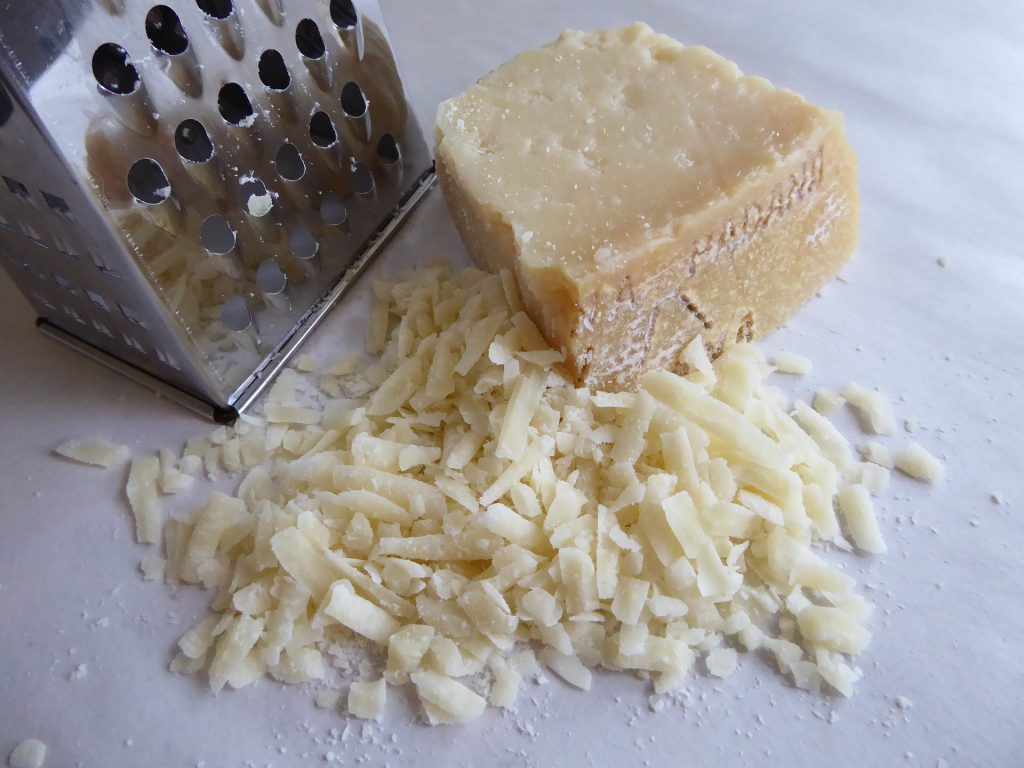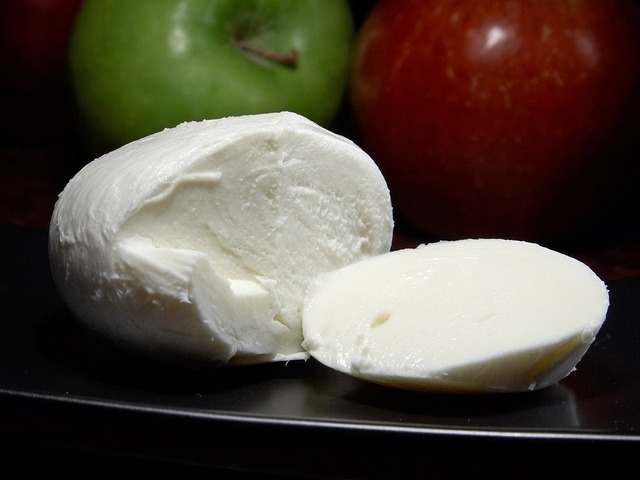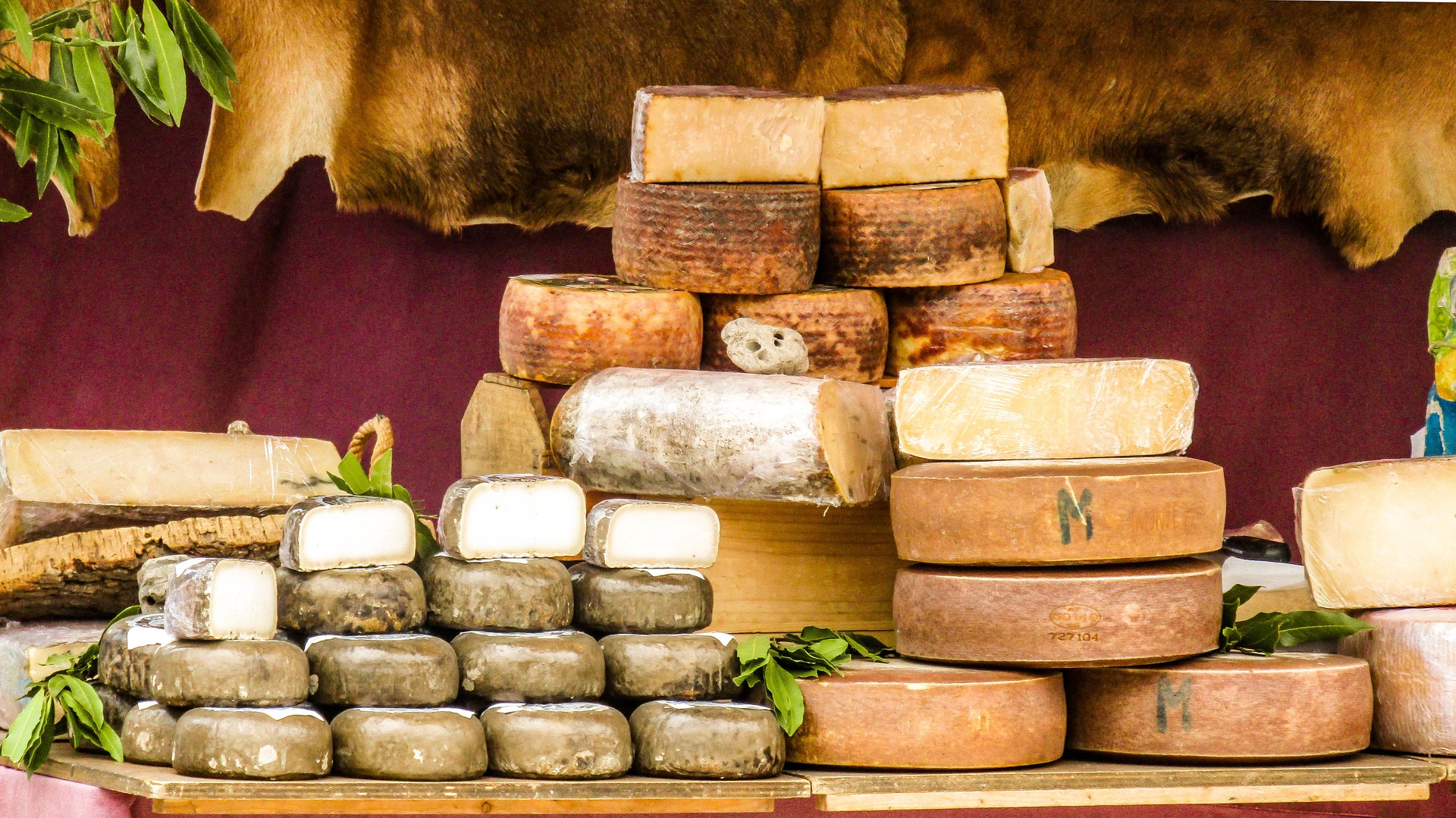Italian cheeses what a passion! From north to south, from east to west, it is a riot of tastes, of strong and delicate flavors, of different textures and seasonings. The dairy variety in Italy is truly extraordinary. Not only for the many types of cheese but also because each one expresses its origin. It is no coincidence that, for example, pecorino cheeses are so widespread in central and southern Italy. It is no coincidence that Parmesan is produced above all in the plain Po Valley. The cheeses are children of territorio, which in Italy is so different and varied that it is also decisive in gastronomy and food culture. In short, when we say Italy we also say cheese. Perhaps we are not the only country to have this prerogative, but we certainly place ourselves in the very first places.
The passion for Parmesan already in medieval times
Historical evidence informs us that in Roman times the production of cheese was a profitable economic activity, but even before that the Greeks consumed it both as food and as a condiment. In Roman society, cheese, fresh or aged, was the food of all social classesi and it was one of the foods that made up the legionnaires' daily ration. The arrival of the barbarians and the fall of the Roman Empire, if on the one hand they represent a period of decline, for cheeses they are a period of growth.

The dairy techniques of the Greeks and Romans are in fact positively contaminated with those of the invaders and therefore enriched. It is thought to be able to be traced to the years of Middle Ages Parmesan cheese, an Italian cheese par excellence and much copied abroad (let's remember Parmesan). Parmesan, which was not however the only type of cheese on the chopping board of medieval tables, was already very popular in those years.
Gorgonzola, Asiago, Montasio…. Italian cow's milk cheeses
And so it has grown over the centuries in variety, taste, maturation and origin. How many Italian cheeses are there according to the basic product with which they are produced, ie milk? We counted five. There are those of cow's, sheep's, goat's milk. Those of buffalo milk and also those produced with mixed milks. Starting from north to south, a quick overview. The passion for Italian cheeses reminds us of Castelmagno, Piedmontese cheese of very ancient dating, produced with cow's milk and aged from two to five months. How not to mention (and here the flavors are strong) the Gorgonzola, Lombard but also Piedmontese, since there is a town of the same name near Milan but whose protection consortium is based in Novara. In Val d'Aosta when we talk about cheese we talk about Fontina.

In Veneto more than one could be mentioned but perhaps the best known is theAsiago, whose land of origin is the plateau of the same name in the province of Vicenza. Still a "geographical" name, Montasius, to remember that cheese produced in Friuli (but also in eastern Veneto) which takes its name from a mountain in the Julian Alps. Both Asiago and Montasio can be of various ages. And to still remain among the cow's milk cheeses, the one par excellence is the Parmigiano Reggiano, recognized as a DOC product already in the XNUMXs.
The wealth of pecorino cheese in central and southern Italy
Going down towards central Italy, the milk from which the cheese is obtained is more and more often that of sheep. So in Tuscany, but also in Umbria, in Lazio with his Pecorino Romano. Like Parmesan, it is an indispensable complement to grate on many first courses but it is also an excellent cheese to be tasted in and of itself. There are many pecorino cheeses that are produced in Sardinia and also in Sicily. How can we forget the Sardinian flower and Sicilian Pecorino, and there are also many Calabrian pecorino cheeses, the famous one of Monte Poro. Returning to cow's milk, a separate chapter deserves the Cheese. Characteristic of the whole of southern Italy, it can be aged in different ways.

And again, the Scamorza of Basilicata, the Burrata Apulians with their soft heart. The Mozzarella which together with Parmigiano have brought Italy to the world. And the very creamy Mascarpone (Lombard DNA) indispensable ingredient for dessert Tiramisùthat squacqueron to fill the delicious Romagna piadina. The infinite variety of ricotta that from north to south, made with sheep or cow's milk, enrich our tables. Italian cheeses are a real passion, it should be said. Passion for excellence in gastronomy. Like Parmesan, in fact, most Italian cheeses are DOC products, Controlled Designation of Origin.





